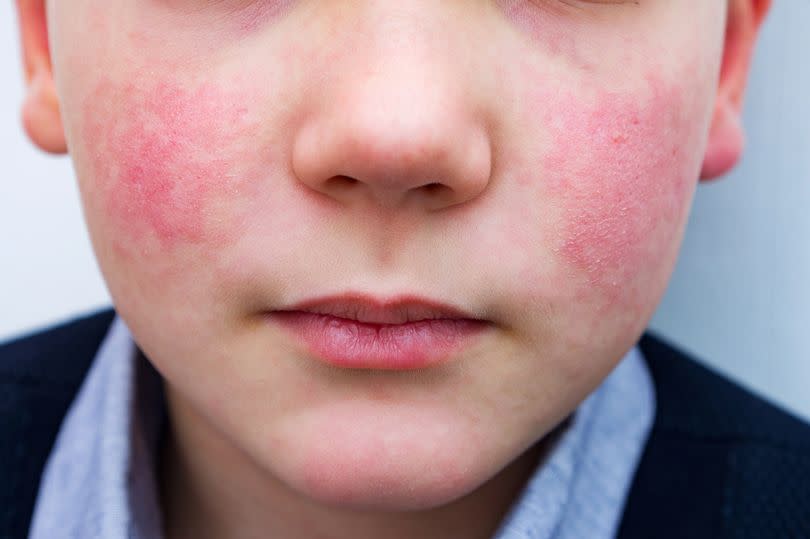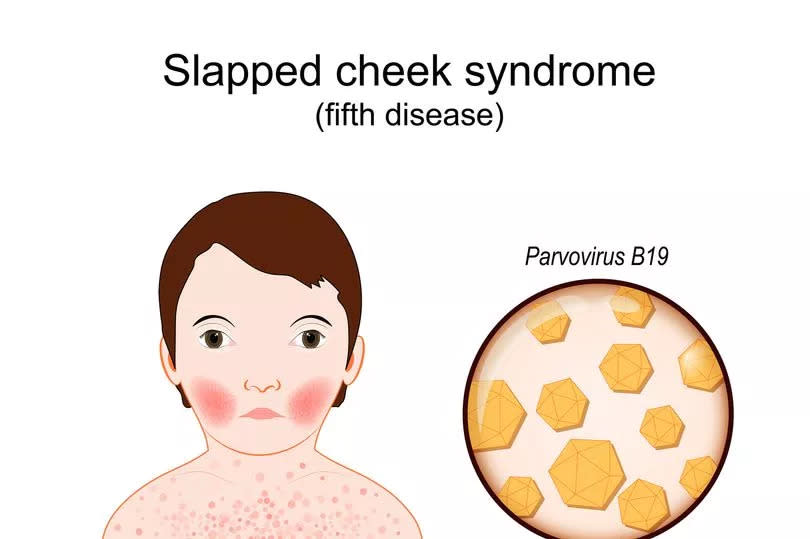NHS warns of signs your child's red face is caused by common infection

Parents are being urged to watch out for signs their child could be suffering from slapped cheek syndrome. The NHS has warned mums and dads of symptoms to be aware of as the infection can last up to three weeks.
Otherwise known as fifth disease, slapped cheek syndrome is common in children and usually gets better on its own. It's rarer in adults, but it can be more severe.
Early signs of slapped cheek syndrome include feeling ill for a few days. Symptoms usually are a slightly high temperature (fever) of around 38C, an upset stomach, a runny nose, sore throat and a headache - the infection is most contagious during this initial period.
Parents may then notice a red rash on their child's cheeks, or on just one side. The redness can be less obvious on brown and black skin.
After a few days later, a spotty rash may appear on the chest, back, arms and legs, which can appear raised. The rash can last anywhere between one to three weeks.

However, it may linger for longer, especially if hot or stressed. Once you’ve had the infection, you’re usually immune to it for life.
As slapped cheek syndrome is usually mild, it should go away without specific treatment after a few weeks. But there are some things you can do to alleviate symptoms.
These include getting plenty of rest and drinking plenty of fluids – babies should continue their normal feeds. Parents can speak to a pharmacist about itchy skin as they can recommend the best antihistamine for children.
Slapped cheek syndrome is caused by a virus (parvovirus B19). The virus spreads by coughs and sneezes or by touching contaminated objects.
It's hard to avoid spreading slapped cheek syndrome because most people do not know they have it until they get the rash. You can only spread it to other people before the rash appears.
To reduce the risk of spreading the virus wash your hands often with water and soap, use tissues to trap germs when you cough or sneeze and bin used tissues as quickly as possible. There’s currently no vaccine available to protect you against the condition.

 Yahoo News
Yahoo News 
